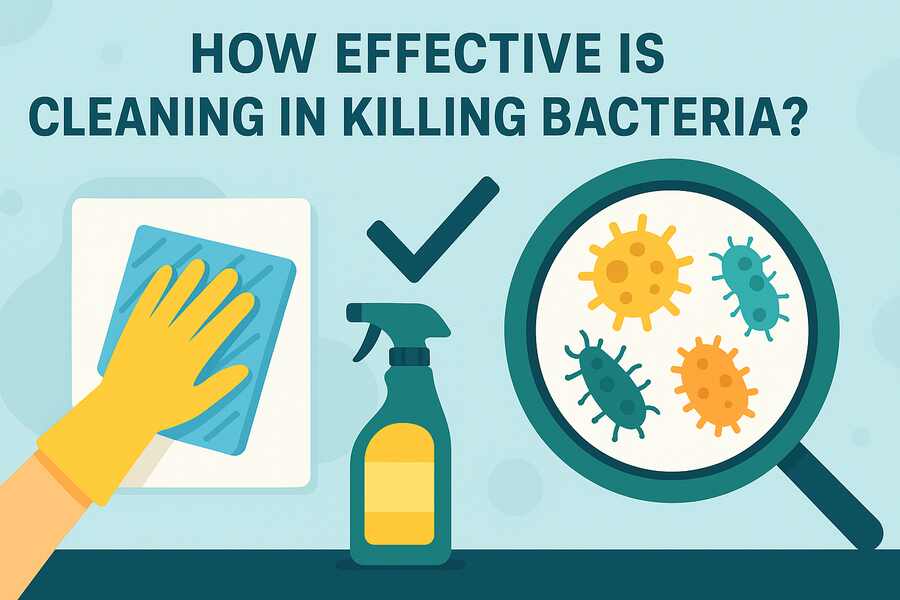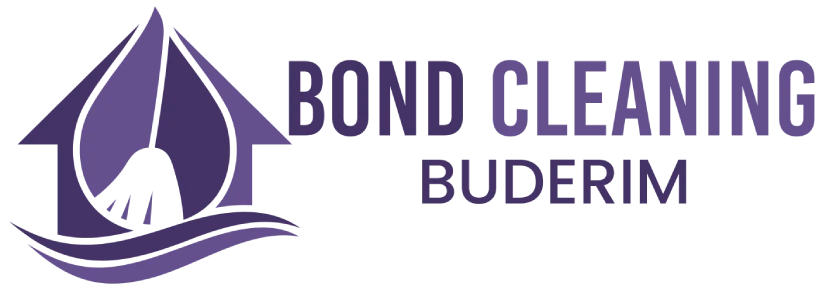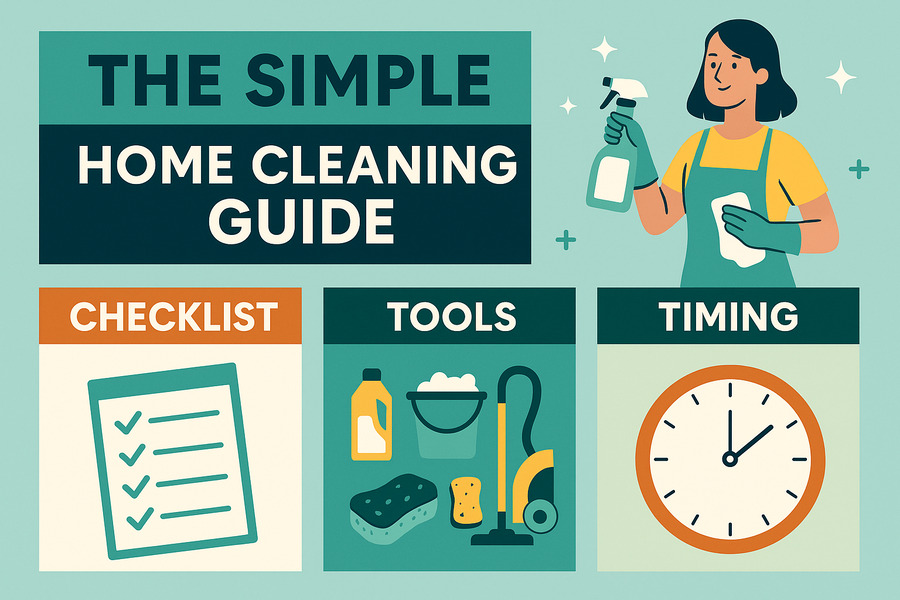How Effective Is Cleaning in Killing Bacteria?

Cleaning Bacteria: What Really Works at Home
Did you ever think that all that cleaning you do in your daily life is effective against bacteria or just gives the appearance that everything is clean? A lot of individuals are under the perception that cleaning a surface or wiping up a floor would thoroughly clear detrimental microbes. Nevertheless, the reality behind cleaning and bacteria elimination is much more difficult than it may seem.
We can find bacteria in every corner of our homes, and this includes the kitchen sink, the bathroom tiles, remote controls and smartphones. Although not all bacteria are harmful, there are those that will make one sick and contract an infection. It is therefore necessary to comprehend the reality of cleaning and the dissimilarity between cleaning and disinfecting, in addition to the most successful cues to a really clean environment. How about science? Does cleaning kill bacteria? Let us take a look at the science behind the same.
1. The Difference in Cleaning and Killing Bacteria
A lot of individuals believe that cleaning just kills the bacteria. Bond Cleaning Buderim, however, is mainly the mechanical removal of dirt and dust and germs on surfaces. An example of this is cleaning a table: when one cleans a table in soapy water, bacteria and their obvious dirt at least are eliminated; however, it is not always assured that all bacteria are killed.
A disinfectant or sanitiser is required to kill bacteria. The products have certain ingredients that kill the harmful microbes. The difference between cleaning and disinfecting will enable you to pick the most appropriate approach in terms of ensuring hygiene in your house.
2. The Mechanism of Cleaning Products
The mechanisms of classics such as soaps and detergents, as used in household cleaning, are to reduce the strength of the dirt and oils adhered to a surface so that it becomes easier to physically shake off the bacteria in the scrubbing or wiping. They also do not kill the bacteria themselves, but lower the number of bacteria considerably.
Disinfectants are not the same; rather, they include powerful preparations such as bleach, alcohol or hydrogen peroxide that are designed to kill bacteria, viruses and fungi. When applied properly, disinfectants ensure the destruction of up to 99.9 per cent of the dangerous microorganisms and, thereby, a higher hygienic value as compared to cleaning.
3. Households Spots that Support Bacterial Growth
Bacteria tend to gather where temperatures are damp, commonly touched or where there is raw food. Kitchen sinks and countertops are hot spots because they touch uncooked meats and vegetables. Bathrooms and their toilets, faucets and showers contain bacteria due to the high level of humidity and regular usage of the area.
Items that can also pick up bacteria because of the continual contact with hands include your phone, keyboard, and remote control. Floors and carpets are also home to bacteria due to dirt and microorganisms tracked into the house. Relaxation in these areas helps you to focus on your activities.
4. Does Clean eliminate bacteria?
The outright answer is no, cleaning does not always kill bacteria. Rather, it physically removes a substantial part of the microbes, including bacteria. As an example, warm water and detergent can help in washing the kitchen surfaces and removing a lot of germs, but still, some bacteria might remain.
In order to kill bacteria fully, the application should be followed by the use of a disinfectant in such high-risk areas as food preparation surfaces or during the cold and flu seasons. This two-pronged procedure guarantees that the harmful microbes will be killed, as opposed to just being minimised.
5. The Value of Disinfection
Killing the bacteria and eliminating the possibility of spreading the illness with the help of disinfection is vital when having this kind of mission. The disinfectants are made to kill microorganisms on hard surfaces and provide a higher level of hygiene compared to the cleaning itself.
To clean the surface well, first is to attain maximum results and also to rub off the dirt and other trash that might be on the surface. Then, use the disinfectant liberally and leave it to dwell for the required amount of time and then wipe. One of the best things to ensure the continual prevention of bacteria is frequent cleaning of high-touch surfaces such as door handles and light switches.
6. Popular Cleaning and Bacteria Myths
Cleaning and bacteria have numerous misconceptions. Another myth is that no bacteria are good, whereas there are beneficial bacteria that are needed to create a healthy surrounding. The other myth is that a clean-looking surface is always free of bacteria, though there are residual germs that do not show.
There is also the belief that the more people use cleaning products, the more bacteria are killed. An excessive use of aggressive chemicals does not always lead to better outcomes and can damage the surfaces or interior air quality. Knowing these myths can make you think better and wiser when cleaning.
7. How to Clean and Kill the Bacteria at Home
Observance of hygiene would be best through the cutting across cleaning and proper disinfection. One thing you can start with is the cleaning process of the contents by using tablet water combined with warm soapy water to remove the dirt and germs. Then, a high-traffic surface should be wiped with a disinfectant such as a doorknob, switch or any other electronic item.
Frequent cleaning of cleaning cloths and sponges negates the presence of bacteria, and drilling the duct holes in strategic locations of the house eliminates the moisture in places where bacteria thrive. The instructions given by the manufacturer should always apply in terms of cleaning and disinfectants such that the impact is maximised, and the surfaces are not damaged.
Conclusion
Therefore, can cleaning kill bacteria? The answer is that cleaning removes bacteria by physical means, whereas eradicating bacteria is addressed through killing. Both of these are necessary in a hygienic setup. Cleaning regularly gives your home a visible tidiness, and also makes it safer, although it still needs to undergo disinfection to ensure full coverage against malicious microbes.


